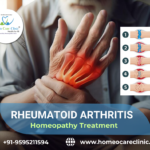Hajdu-Cheney Syndrome (HCS) is a rare disorder of bones, the skull, and connective tissues. HCS has been reported with acute osteoporosis, progressive bone loss or acro-osteolysis, and other skeletal features. HCS occurs due to mutations in the NOTCH2 gene causing progressive bone weakening with a range of systemic complications.
Hajdu-Cheney Syndrome Causes
- Genetic Mutation: The underlying cause of Hajdu-Cheney Syndrome is a mutation in the NOTCH2 gene, a gene involved in bone development and bone remodeling.
- Spontaneous Mutations: While some are inherited by way of mutations inherited from parents, the majority result from new (de novo) mutations.
- Connective Tissue Abnormalities: This disease includes collagen and other structural proteins, leading to skeletal deformity and weakening.
Hajdu-Cheney Syndrome Symptoms
HCS has a variety of skeletal and systemic presentation, which are:
- Severe osteoporosis and multiple fractures
- Acro-osteolysis (resorption of distal phalangeal bone)
- Short stature and scoliosis
- Facial dysmorphisms, including high forehead and hypoplastic jaw
- Tooth eruption delay and dental abnormality
- Cardiovascular and renal complications
- Vision and hearing loss
- Hyperextensibility of joints and muscle weakness
Hajdu-Cheney Syndrome Radiology Findings
Hajdu-Cheney Syndrome Radiology Findings is key in the diagnosis of HCS. Intrinsic imaging findings are:
- Acro-osteolysis: Progressive resorption of distal phalanges
- Osteoporosis: decreased bone density, increased fracture risk
- Wormian bones: additional bones in skull sutures
- Vertebral defects: deformed, flattened vertebrae that produce instability of the spine
- Craniofacial defects: mandibular hypoplasia and other cranial anomalies
Hajdu-Cheney Syndrome Life Expectancy
Life expectancy is not guaranteed in Hajdu-Cheney Syndrome, but with proper management, most of the patients survive into adulthood. Spinal cord compression, severe osteoporosis, or cardiovascular disease can affect longevity, though. Proper care and early diagnosis can significantly improve the quality of life.
Hajdu-Cheney Syndrome Treatment
There is no cure for Hajdu-Cheney Syndrome, but bone strengthening and relief from symptoms are managed with:
- Bisphosphonates: For bone strengthening and retardation of bone resorption
- Pain control: Nonsteroidal anti-inflammatory drugs (NSAIDs) or other pain control measures
- Physical therapy: For facilitating movement and avoiding stiffness of the joints
- Surgery: Spinal stabilization or orthopedic surgery may, in extremely rare cases, be indicated
- Hearing aids and visual therapy: For symptom management of sensory loss
- Ongoing bone density tests to avoid fractures
Homeopathic Hajdu-Cheney Syndrome Treatment
Homeopathy provide a complementary approach to managing bone health, pain, and systemic symptoms in Hajdu-Cheney Syndrome. While it does not change genetic mutations, it helps in strengthening bones, reducing pain, and improving overall well-being.
Key Homeopathic Remedies for Hajdu-Cheney Syndrome
- Calcarea Phosphorica – Maintains bone density and alleviates fragility
- Symphytum Officinale – Facilitates healing of bones and repair of fractures
- Silicea – Helps build strength of connective tissue and prevents deformities
- Ruta Graveolens – Relieves pain of bones and joint mobility
- Hypericum Perforatum – Beneficial in the event of pain in nerves and back issues
- Calcarea Fluorica – Assists in bone strengthening and reducing skeletal deformities
Lifestyle and Dietary Recommendation
- Calcium and Vitamin D-Fortified Diet: For strengthening bones
- Weight-Bearing Exercise: To have strong bones
- Moderate Sun Exposure: To maximize the levels of natural Vitamin D
- Regular Monitoring: Regular radiological checks and bone densitometry
- Avoid Smoking and Alcohol: They aggravate osteoporosis
FAQs of Hajdu-Cheney Syndrome
- Is Hajdu-Cheney Syndrome curable?
No, but therapy with medication, homeopathy, and lifestyle change will enhance quality of life.
- What are the key radiological findings in Hajdu-Cheney Syndrome?
Radiology in Hajdu-Cheney Syndrome depicts acro-osteolysis, osteoporosis, and craniofacial dysmorphism.
- How is Hajdu-Cheney Syndrome treated?
Treatment of Hajdu-Cheney Syndrome includes bisphosphonates, pain management, physical therapy, and homeopathy to reduce symptoms.
- What is the prognosis for Hajdu-Cheney Syndrome patients?
Hajdu-Cheney Syndrome life expectancy is unpredictable, but early intervention and an interdisciplinary team enhance mobility and prevent complications.
Conclusion
Hajdu-Cheney Syndrome is a multisystem disease with an emergent need for multisystem therapy. Besides the routine treatment, homeopathy can offer robust bones, pain-free existence, and overall health. Dr. Vaseem Choudhary and Homeo Care Clinic staff provide customized homeopathy to HCS patients to attain improved symptom control and quality of life.
Looking for natural Hajdu-Cheney Syndrome relief? Phone Homeo Care Clinic today!
To schedule an appointment or learn more about our treatment, please visit our website or give us a call +91 9595211594 . Our friendly staff will be happy to assist you. If you’re searching for the best homeopathic doctor, we are here to help.
Follow us on Facebook, Twitter, and Instagram for valuable insights into the world of homeopathy and holistic health.
Facebook – https://www.facebook.com/homeocareclinicpune
Instagram – https://www.instagram.com/homeocareclinic_in
Website – https://www.homeocareclinic.in
Chat with a best homeopathic doctor privately
If you have any queries regarding your disease or any symptoms, Click to send a WhatsApp message. Our best homeopathy doctor will be happy to answer you.
Book an Appointment
If you want to visit our clinic, Click to book an appointment.
Online treatment
If you are a busy professional or you are living in a remote town or city with no good homeopathic doctor near you, Clickhere to start an online homeopathic treatment with the world’s most exclusive, experienced, and best homeopathic clinic, managed by Dr. Vaseem Choudhary, a world-renowned homeopathic doctor.






